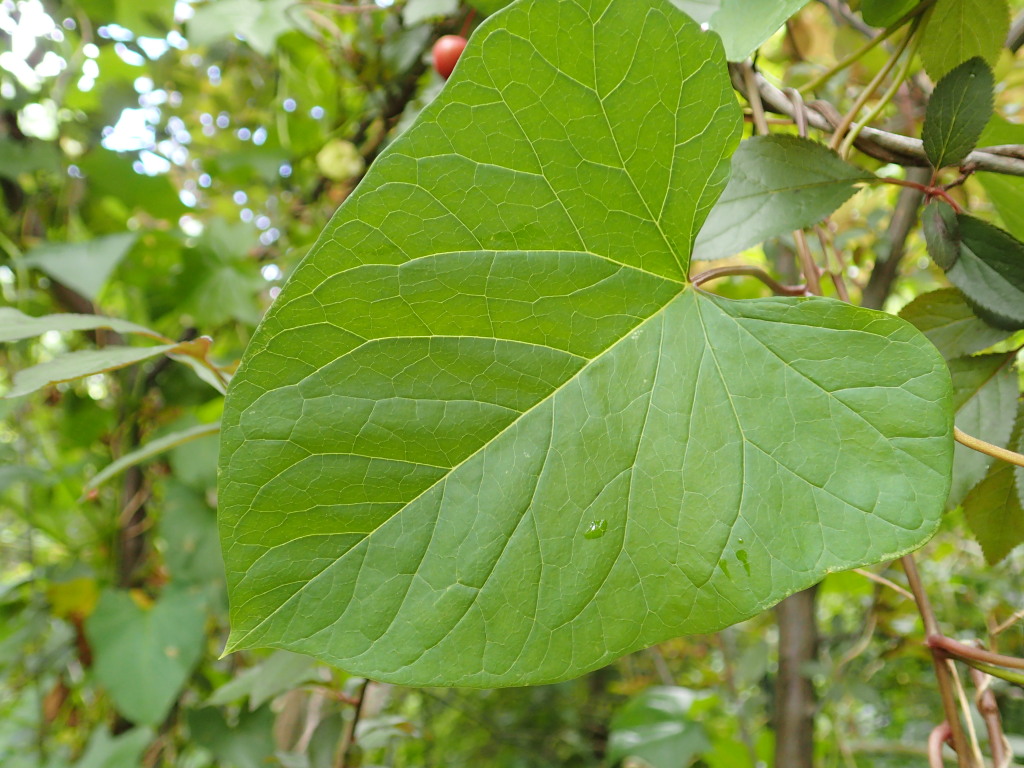Calystegia silvatica
(Kit.) Griseb. Greater BindweedGlabrous, twining perennial. Leaves ovate to broad-ovate, mostly 5–10 cm long, 3–10 cm wide, apex shortly acuminate, mucronate, base cordate, margins undulate, basal lobes shallowly lobed; petiole 4–8 cm long. Flowers with peduncles 8–20(–30) cm long, much longer than petioles; bracteoles saccate, broader than long to broad-ovate, 2–3.5 cm long, apex rounded, truncate, emarginate or subacute, longer than and enclosing calyx, overlapping for nearly entire length; sepals 1.5–2 cm long; corolla 5–9 cm long, white or rarely pinkish. Capsule ovoid, 10–12 mm long. Flowers spring and summer.
GleP, VVP, VRiv, GipP, OtP, Gold, EGL, HSF, OtR, Strz, VAlp. An occasional garden-escape now established in urban waste areas, agricultural land, rail reserves etc.
2 subspecies, both in Victoria. See also note under Calystegia sepium.
Jeanes, J.A. (1999). Convolvulaceae. In: Walsh, N.G.; Entwisle, T.J., Flora of Victoria Vol. 4, Cornaceae to Asteraceae, pp. 365–375. Inkata Press, Melbourne.
 Spinning
Spinning



